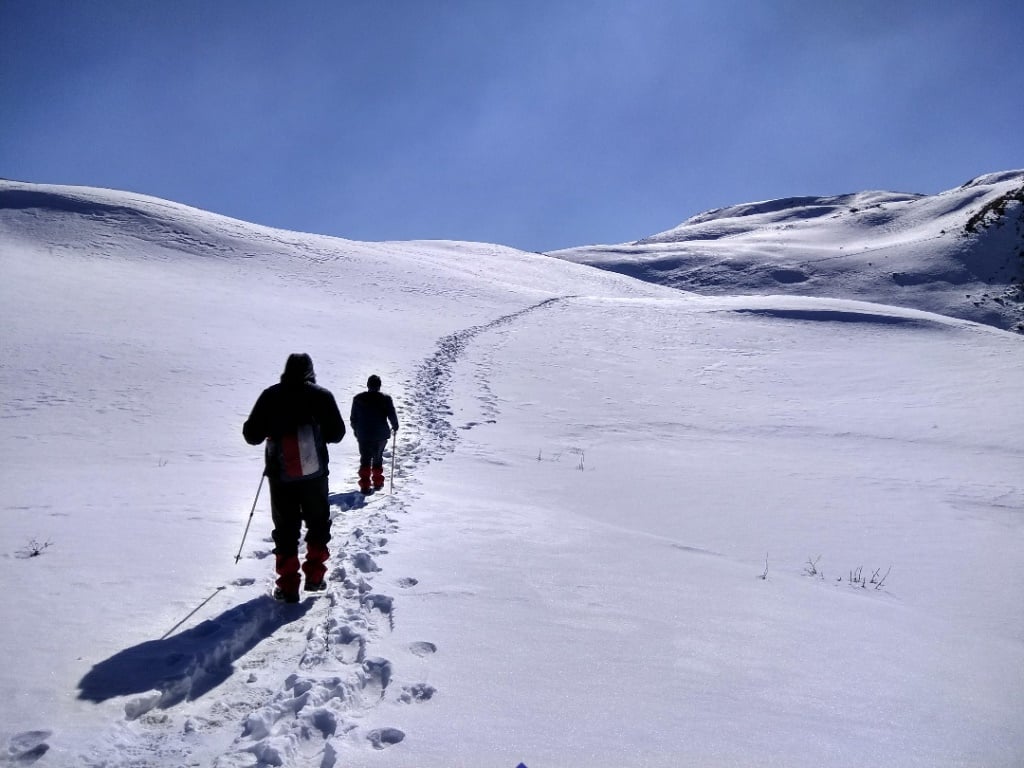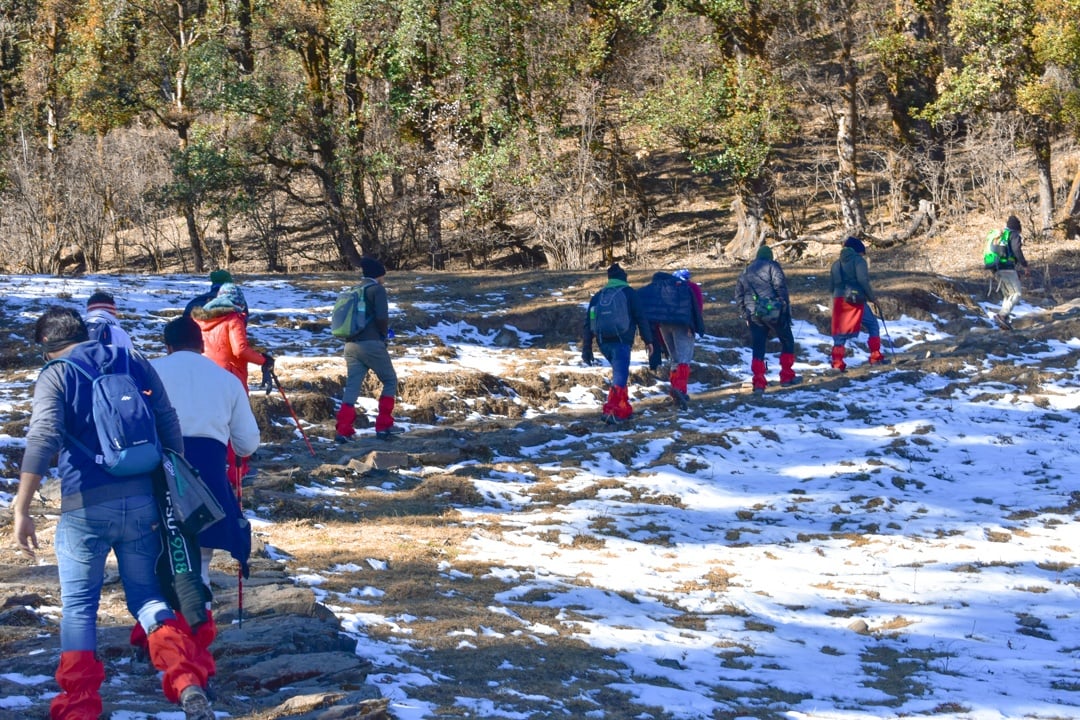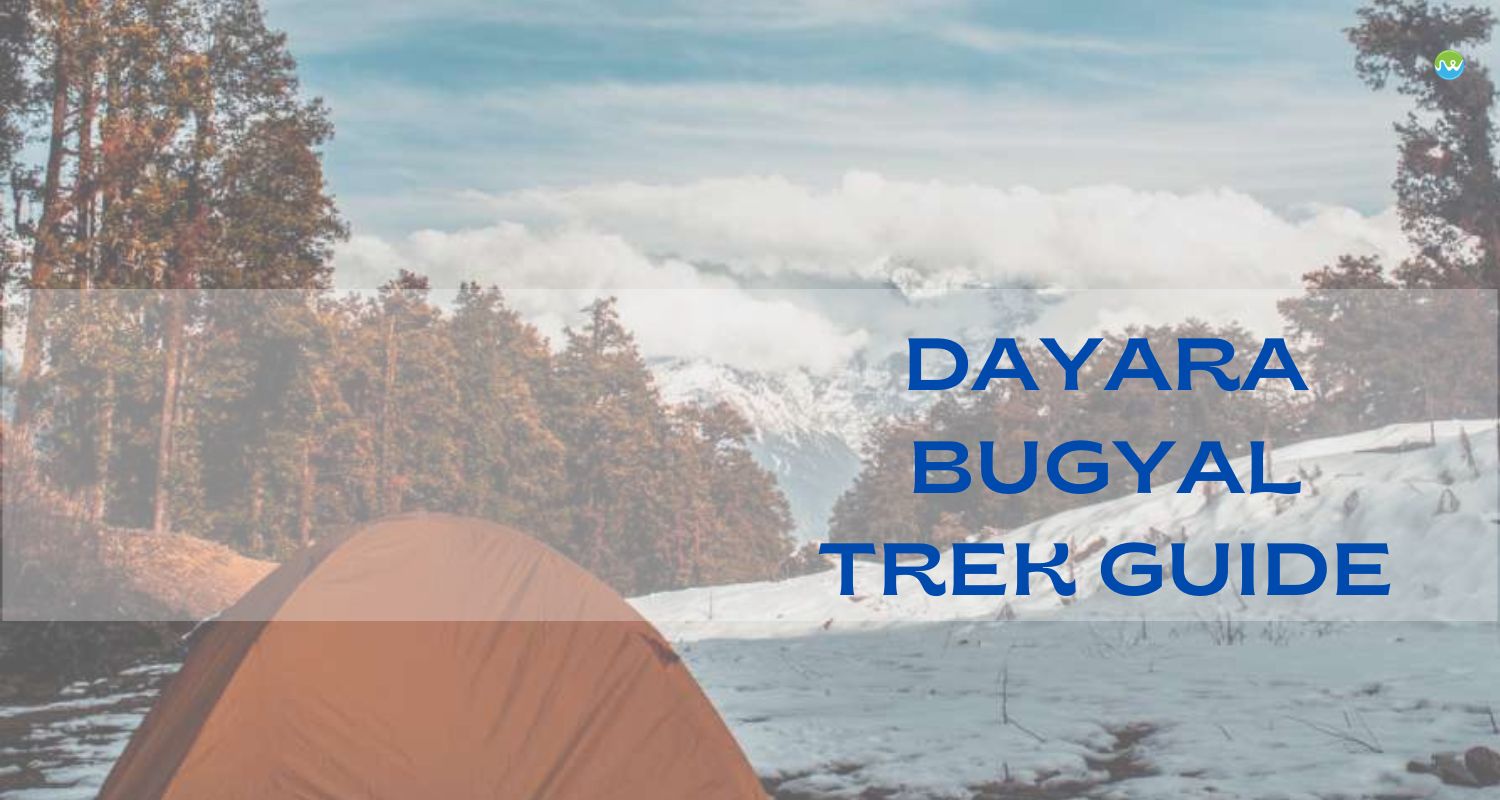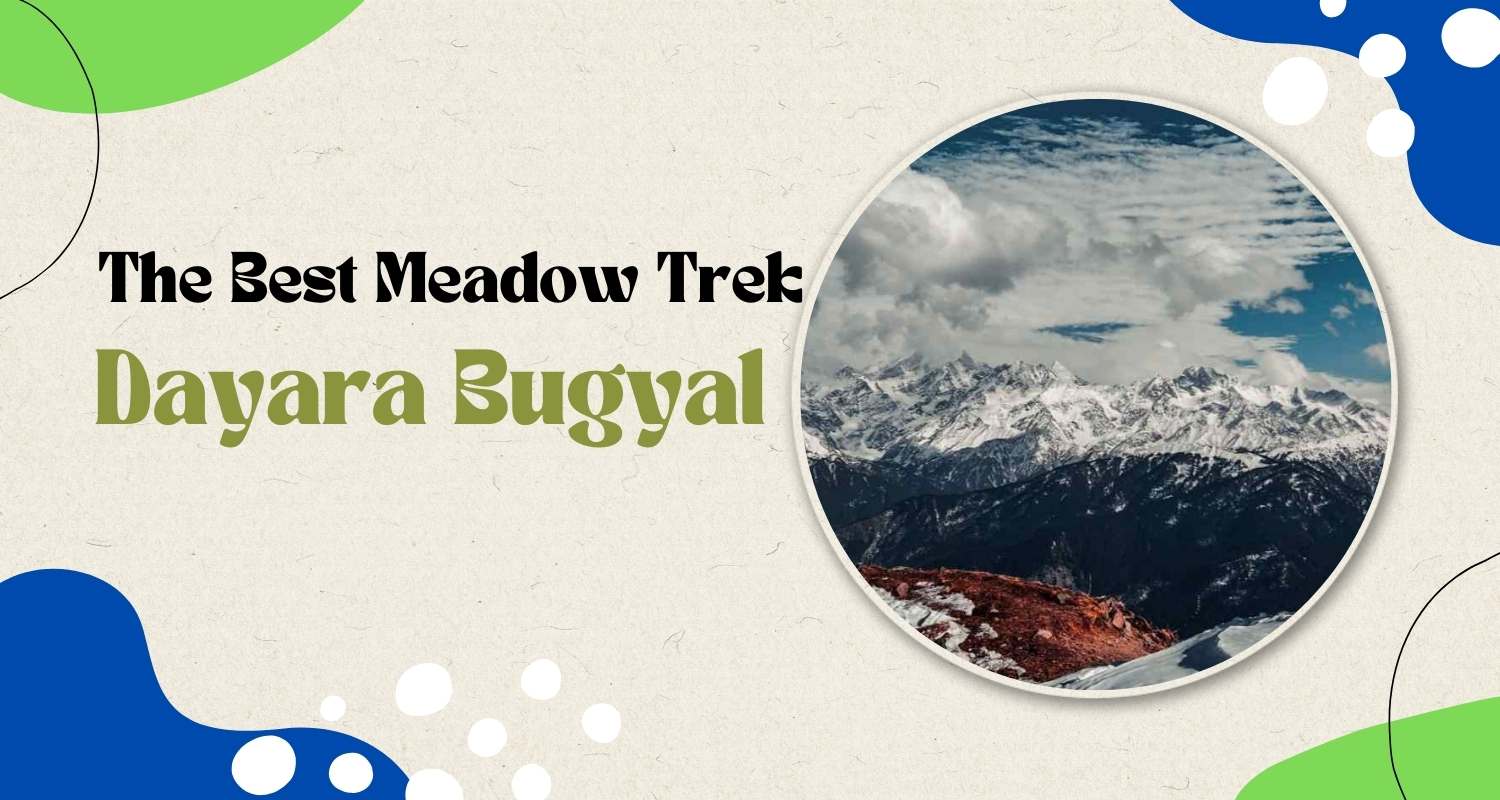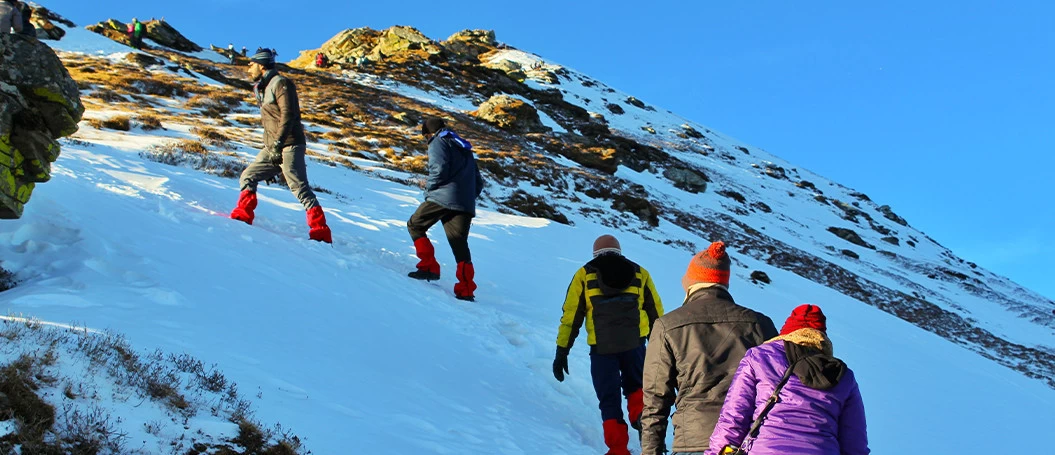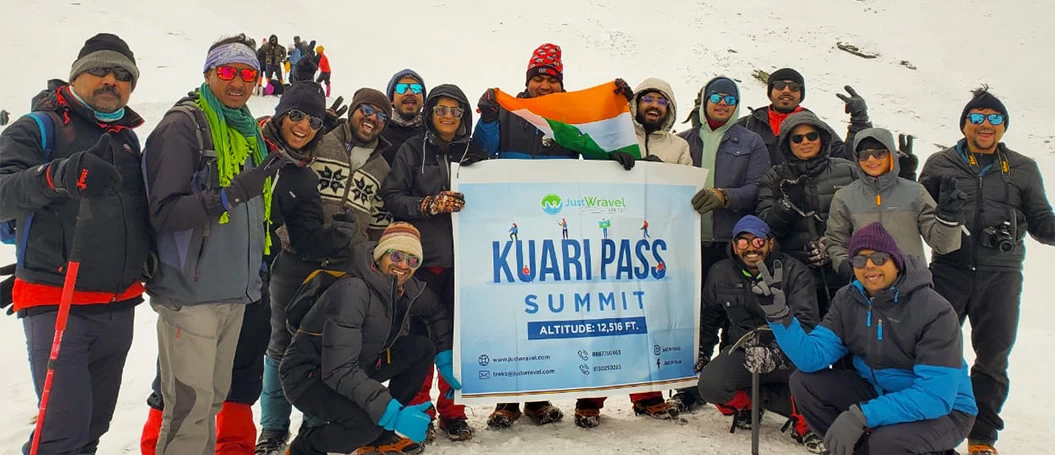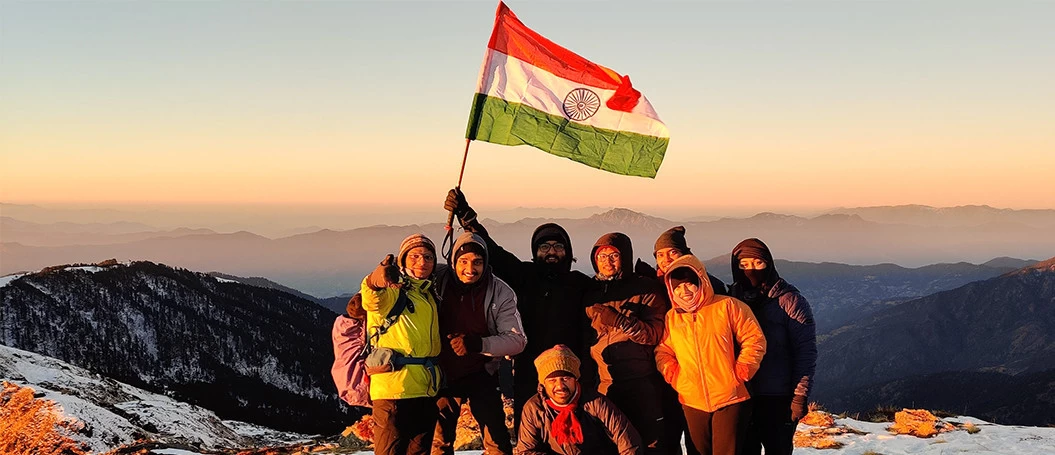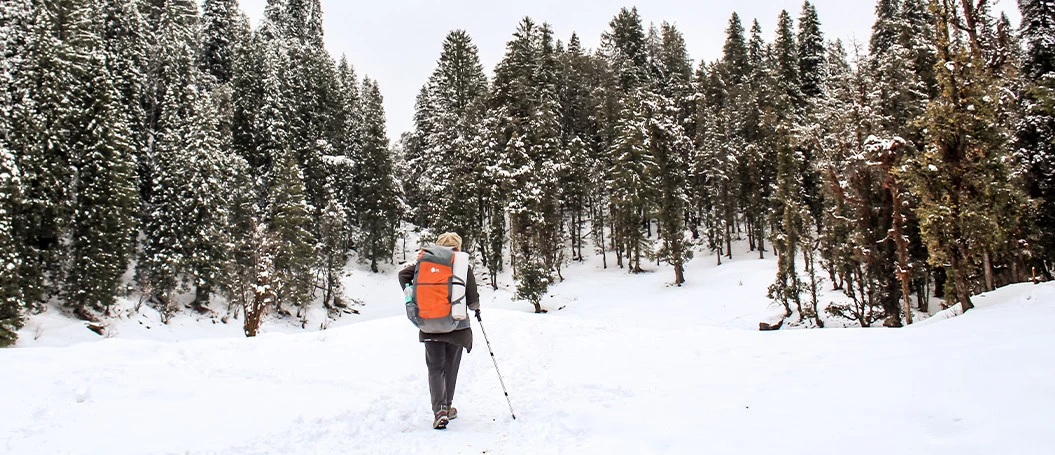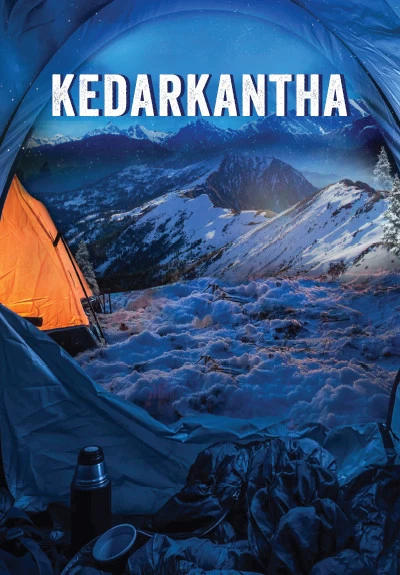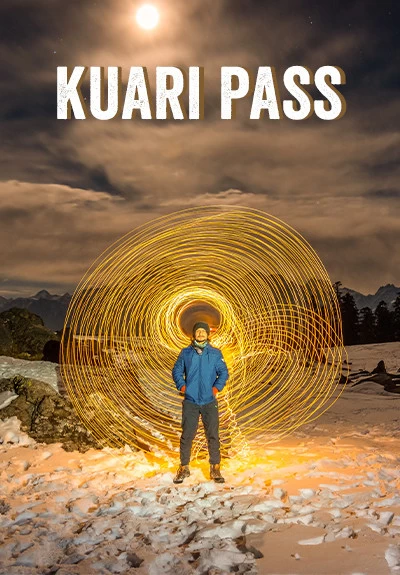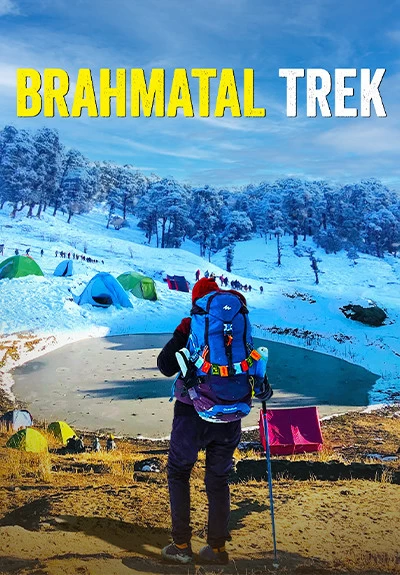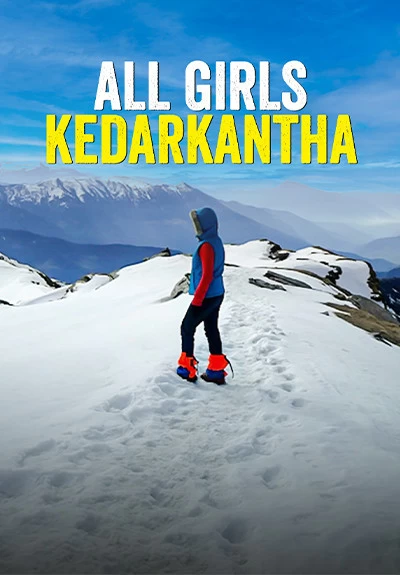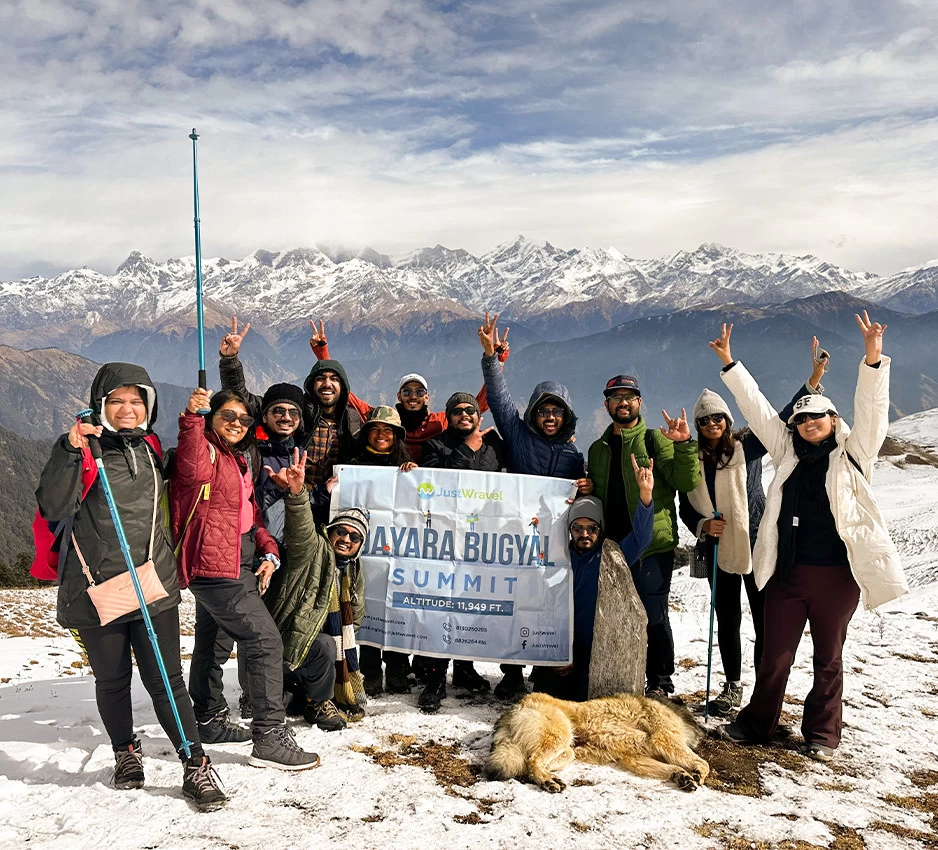
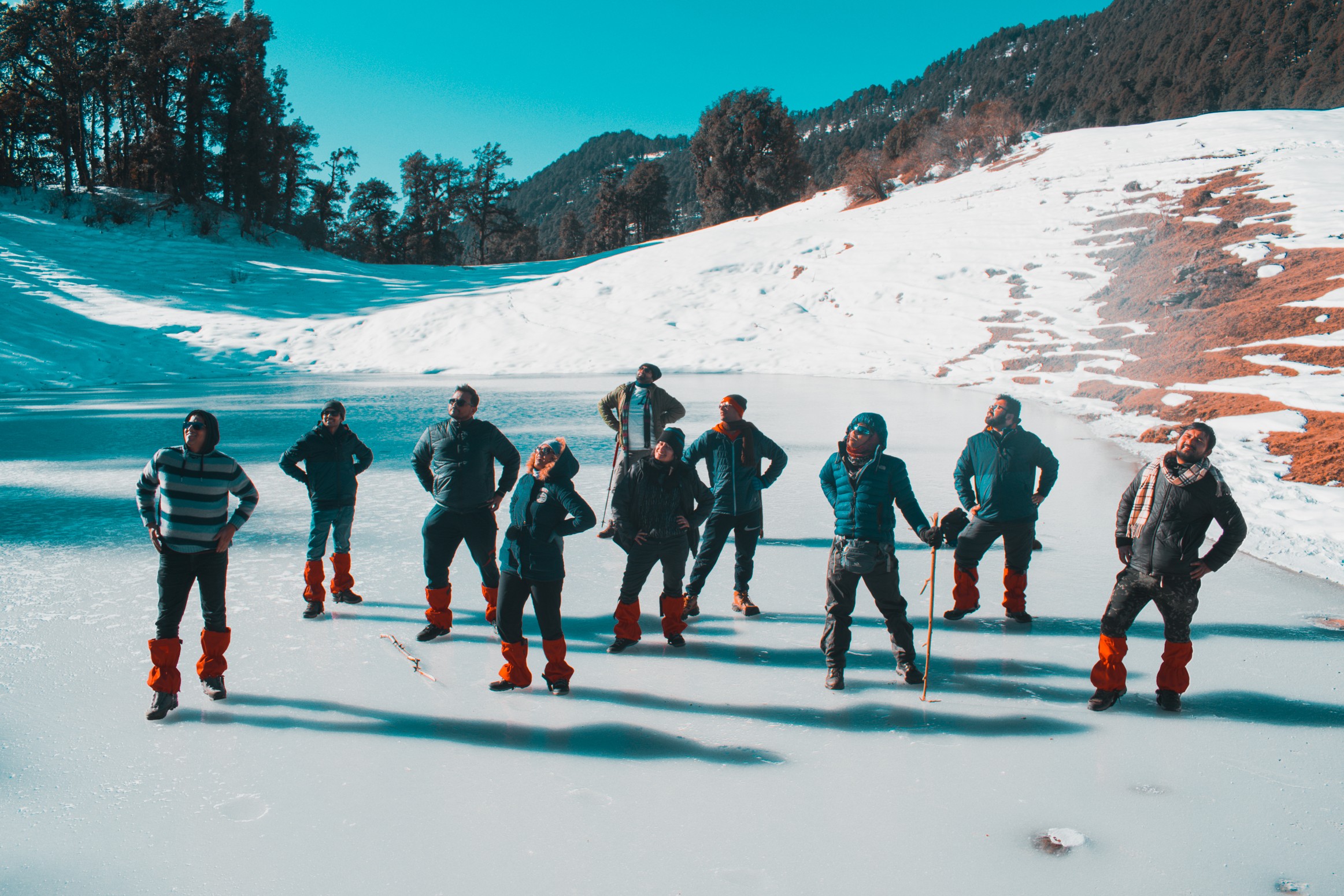

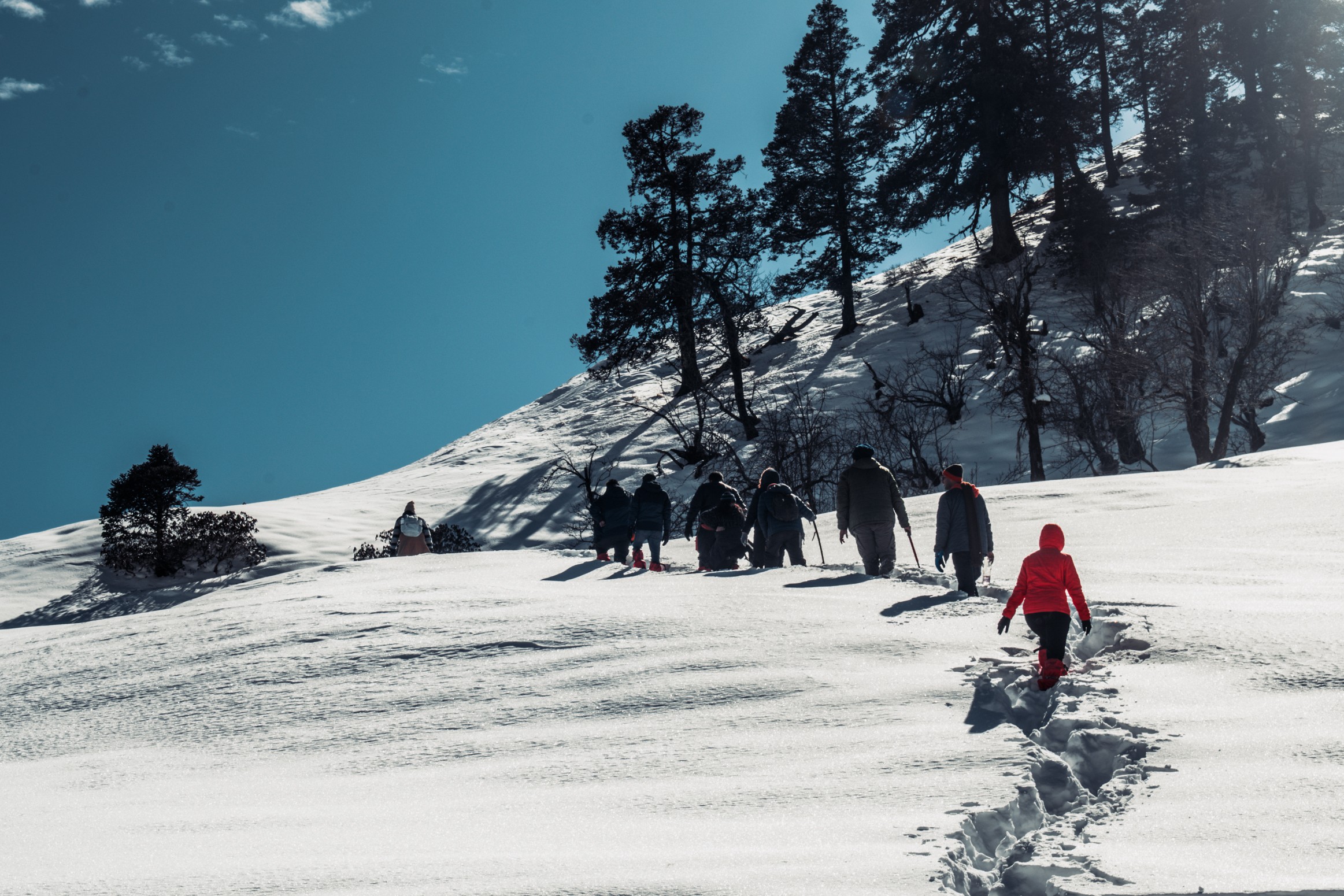

Dayara Bugyal Trek
Details
Inclusions
Safe Travel
Flexible Cancellation
Easy EMI
Certified Captains
24/7 Support
Overview
Spending your weekend on a mountain trek, breathing in the fresh air that is rare in the bustling cities most of us are stuck in, is truly the ultimate way to unwind. If you love nature or seek adventure, and have been longing for an escape from the confines of your home, Dayara Bugyal Trek is the perfect destination for you. Suitable for both beginners and experienced trekkers, this 22km long trek offers incredible rewards, allowing you to witness the majestic peaks of the Himalayas, such as the Gangotri massif, Black Peak, Bhgirathi massif, Bandarpoonch massif, and more. The group sets off towards Natin, the gateway to the enchanting Dayara Bugyal trek. The seven-hour drive, winding through picturesque landscapes, fills us with anticipation. Upon reaching Natin, we are welcomed by the crisp mountain breeze and stunning views, and we settle into our designated stays, preparing for the adventure that lies ahead.
The next morning, you rise with the sun and trek from Natin to Gui. The natural beauty that surrounds us is nothing short of a visual feast, with the rustling leaves and chirping birds creating a soothing soundtrack for our journey. The morning that follows, you embark on the most anticipated part of the trek – the journey to Dayara Bugyal. The trail ahead promises lush green meadows that stretch as far as the eye can see, offering panoramic views of majestic Himalayan peaks such as Bandarpoonch, Black Peak, and Draupadi ka Danda. As you ascend, the landscape opens up, revealing the vast expanse of the alpine meadow. Upon reaching Dayara Bugyal, you’ll be spellbound by the sheer beauty of the place. After spending some blissful moments at the top, capturing memories and soaking in the views, begin your descent back to Gui.
The final day calls for a descent filled with moments of nostalgia, as you pass by the same oak forests and picturesque views that greeted you on your way up. The journey back is a reflective one, as you pass by quaint Himalayan hamlets and lush valleys, each one adding to the tapestry of memories you've woven over the past days.
For snow enthusiasts, the best time to embark on the Dayara Bugyal trek is from December to March. The best part is that this trek can be conveniently completed over a long weekend, allowing you to indulge in this unforgettable experience without missing out on your college or work commitments. We highly recommend this trek as it encompasses all the elements of a remarkable adventure that you should not miss out on. So, if you're yearning for a break from the mundane, pack your bags and join us on this unforgettable journey to Dayara Bugyal. The mountains are calling, and they promise an experience like no other.
Gallery




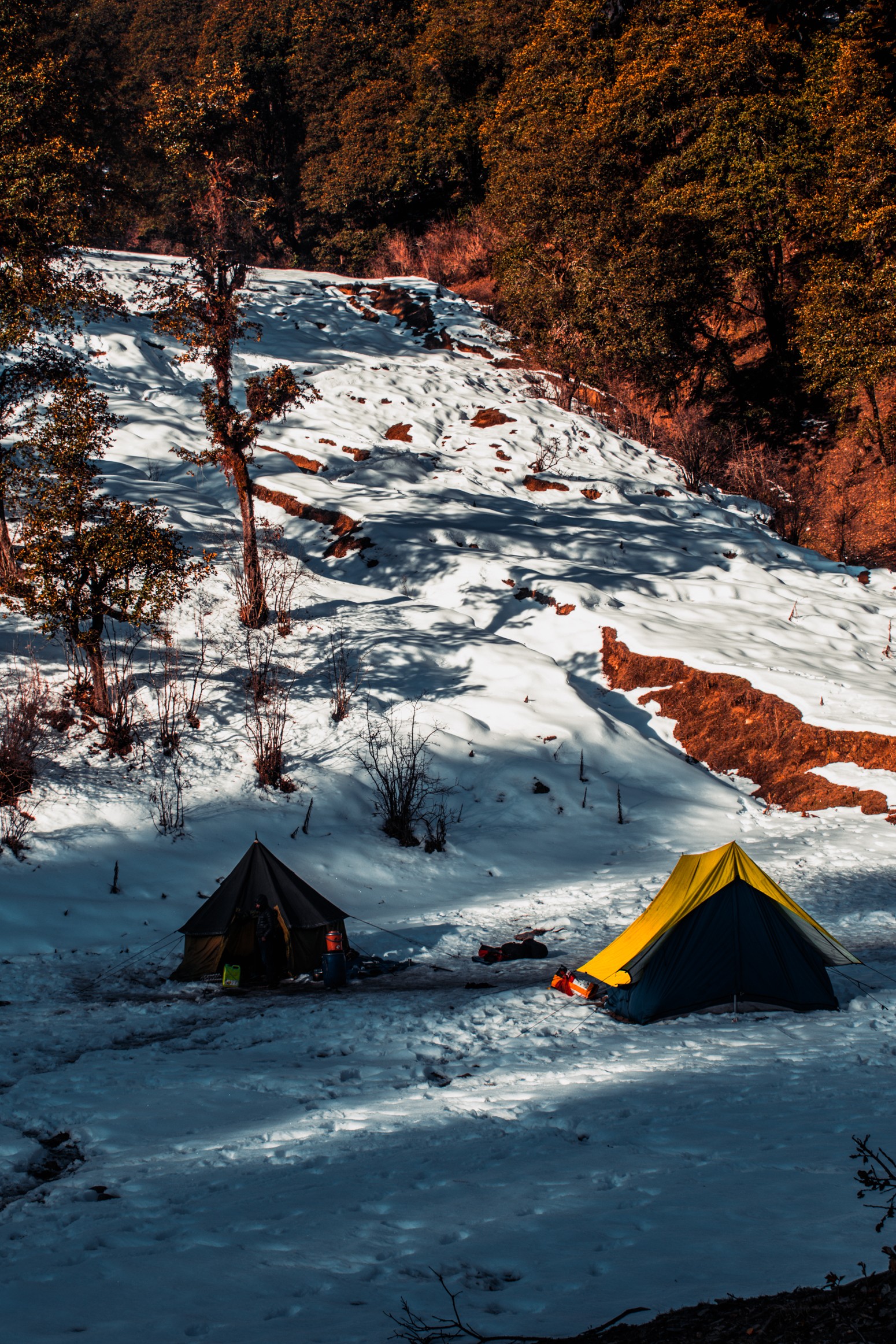
Itinerary
1
Day
Drive from Dehradun to Natin (180 Kilometers, 7 Hours )
2
Day
Trek from Natin to Gui (5 Kilometers, 5 Hours)
3
Day
Gui to Dayara Bugyal | Back to Gui (13 Kilometers, 9 Hours)
4
Day
Trek from Gui to Natin (5 Kilometers, 4 Hours) Drive to Dehradun (180 Kilometers, 7 Hours)
Age Limit (Trip Wise)
Weekend
Getaways
18-38
Himalayan
Treks
18-48
Backpacking
Trips
18-40
Biking
Trips
18-45
Customized
Trips
No Limit
Inclusions & Exclusions
| Inclusions | Exclusions |
Accommodation: 1 Night in a Hotel / Homestay on a triple/quad sharing basis & 2 Nights Tented accommodation on a triple sharing basis. Transportation: Surface transfer from Dehradun - Natin - Dehradun by Sumo / Bolero / Tempo Traveler ( Depends on the number of travelers). Meals: All Meals from (day 1 Dinner to day 4 Breakfast) are included. We provide simple nutritious vegetarian food on all days of the trek. Snacks: Morning / Evening Tea / Coffee with light snacks and soup while on the trek. Camping logistics: Trekking tent, Sleeping bags, Mattresses, Dining tent, Kitchen tent and Toilet tent. Trek Leader Qualified and Experienced Trek leader and support staff. Permits: All necessary fees and permits .(For Indians) Trekking Equipment: Gaiters, Micro Spikes, and Rope if required. Safety Equipment: Walkie / Talkie, Basic First Aid kit with Oximeter, Blood Pressure Monitor and Oxygen Cylinder. Guide : Local experience guide ( depends on the group size). Others : Cloak Room facility available at base camp for extra luggage. | 5% GST Any expenses of personal nature. Meals during transit. Insurance of any kind. Unscheduled delay due to landslide. Cost Escalation due to “ Force Majeure and Evacuation charges”. Anything not mentioned explicitly in the above program. |
Cancellation Policy
| Upto 21 days | 20-15 days | 14-8 days | 7-0 days | |
| Batch Shifting | ||||
| Cancellation Charge | Free Cancellation | 25% of the Trip Amount | 50% of the Trip Amount | 100% of the Trip Amount |
| Booking Amount | Refunded in mode of Credit Note | Adjusted in Refund Deduction | Adjusted in Refund Deduction | No Refund |
| Remaining Amount | Full Refund (minus) booking amount | Refund (minus) 25% of the trip amount | Refund (minus) 50% of the trip amount | No Refund |
Payment Policy
| Upto 21 days | 21-15 days | 14-08 days | 07-03 days | |
|---|---|---|---|---|
| Booking Amount | ||||
| 50% Payment | Optional | Compulsory | ||
| 75% Payment | Optional | Optional | Compulsory | |
| 100% Payment | Optional | Optional | Optional | Compulsory |
Things To Pack
Rucksack:
You must pick a good quality backpack with a comfortable fit and straps that won’t give you shoulder pain. You can check out your nearest Decathlon store for a good trekking backpack.
You must pick a good quality backpack with a comfortable fit and straps that won’t give you shoulder pain. You can check out your nearest Decathlon store for a good trekking backpack.
Day Bag / Day Pack:
When you head towards the summit, you are required to carry only a few necessary items and for that, you need a day backpack as you will leave your bigger one on the campsite.
When you head towards the summit, you are required to carry only a few necessary items and for that, you need a day backpack as you will leave your bigger one on the campsite.
Hiking Shoes :
Durable footwear designed for rugged terrains.
Durable footwear designed for rugged terrains.
Floaters or Sandals:
Although the entire trek requires a good quality shoe, you still need to let your feet breathe to avoid chafing and blisters. When you are at the camp, a good pair of sandals and floaters will help you to move freely.
Although the entire trek requires a good quality shoe, you still need to let your feet breathe to avoid chafing and blisters. When you are at the camp, a good pair of sandals and floaters will help you to move freely.
Tees / Tshirts:
You must keep at least three pairs of quick dry tees so that you can wash them in between stops for proper hygiene.
You must keep at least three pairs of quick dry tees so that you can wash them in between stops for proper hygiene.
Poncho:
A poncho is an evolved form of a raincoat that provides coverage to your body as well as your bag and ensures total water protection from rain.
A poncho is an evolved form of a raincoat that provides coverage to your body as well as your bag and ensures total water protection from rain.
Quick Dry Towel:
A quick dry towel will help in maintaining proper hygiene. It must dry quickly because the wet fabric will only increase the chance of bacterial growth.
A quick dry towel will help in maintaining proper hygiene. It must dry quickly because the wet fabric will only increase the chance of bacterial growth.
Sanitizer:
Essential for maintaining cleanliness while trekking.
Essential for maintaining cleanliness while trekking.
Sun Cap / Hat:
A lightweight sun cap with side flaps is perfect to keep your head cool and avoid sunburns on a sunny day.
A lightweight sun cap with side flaps is perfect to keep your head cool and avoid sunburns on a sunny day.
Sunscreen SPF 40+:
To avoid sunburns and chafing, you need to put on sunscreen as well as cold cream.
To avoid sunburns and chafing, you need to put on sunscreen as well as cold cream.
Water Bottle (Re-usable):
Hydration is extremely important when it comes to trekking. Carrying a water bottle that you can refill with Himalayan water is a must.
Hydration is extremely important when it comes to trekking. Carrying a water bottle that you can refill with Himalayan water is a must.
Personal Toiletries:
A bag with all your essentials including napkins, toothpaste, sanitizers, paper soap, etc should be carried in a ziplock bag.
A bag with all your essentials including napkins, toothpaste, sanitizers, paper soap, etc should be carried in a ziplock bag.
Personal Medication / First Aid:
A few cuts and bruises are almost inevitable when you are on a trek so carrying a medical kit with bandages, Dettol, etc is necessary.
A few cuts and bruises are almost inevitable when you are on a trek so carrying a medical kit with bandages, Dettol, etc is necessary.
Sun Glasses / Reading Glasses:
Photochromatic glasses are specs that are designed to transform into anti-glare shades depending upon exposure to the sun. They are good when it comes to eye protection but one can also opt for clip-on glasses etc.
Photochromatic glasses are specs that are designed to transform into anti-glare shades depending upon exposure to the sun. They are good when it comes to eye protection but one can also opt for clip-on glasses etc.
Charger:
To keep your electronic devices powered during the trip.
To keep your electronic devices powered during the trip.
Power Bank:
Ensures your devices stay charged when there are no outlets.
Ensures your devices stay charged when there are no outlets.
Personal Documents & ID's:
Identification proofs like Aadhar Card, Drivers License.
Identification proofs like Aadhar Card, Drivers License.
Laundry Bag (Waterproof):
In case your clothes get wet or your garments don’t dry, you can carry them in polythene. However, make sure that all the plastic that you are carrying into the woods leaves with you. Don’t litter in the mountains.
In case your clothes get wet or your garments don’t dry, you can carry them in polythene. However, make sure that all the plastic that you are carrying into the woods leaves with you. Don’t litter in the mountains.
Track Pants:
A good pair of track pants made of polyester will let your skin breathe. They’re lightweight, dry easily, and comfortable to walk around in. You can easily avoid chafing and rashes by investing in a good pair of track pants.
A good pair of track pants made of polyester will let your skin breathe. They’re lightweight, dry easily, and comfortable to walk around in. You can easily avoid chafing and rashes by investing in a good pair of track pants.
Trekking Shoes:
A good trekking shoe is comfortable, provides ankle support, and has a good grip as well. They shouldn’t be chunky, instead, they should be lightweight and sturdy.
A good trekking shoe is comfortable, provides ankle support, and has a good grip as well. They shouldn’t be chunky, instead, they should be lightweight and sturdy.
Cotton Socks:
Cotton socks are extremely comfortable to move around in and are lightweight as well which is why you can always count on a good pair of cotton socks while trekking. However, keep in mind to change them and avoid wearing them when they are wet.
Cotton socks are extremely comfortable to move around in and are lightweight as well which is why you can always count on a good pair of cotton socks while trekking. However, keep in mind to change them and avoid wearing them when they are wet.
Woolen Socks:
A good pair of woolen socks, especially merino, are comfortable, limit odors and provide adequate insulation from the cold so you can wear them at night.
A good pair of woolen socks, especially merino, are comfortable, limit odors and provide adequate insulation from the cold so you can wear them at night.
Woolen Gloves:
Insulated gloves help in maintaining proper body heat in your hands and also provide a better grasp on trekking poles.
Insulated gloves help in maintaining proper body heat in your hands and also provide a better grasp on trekking poles.
Main Jacket:
It’s emphasized that you need to carry proper layers so you can avoid getting cold which is why you need to carry a heavy jacket that you can put on over your other clothes.
It’s emphasized that you need to carry proper layers so you can avoid getting cold which is why you need to carry a heavy jacket that you can put on over your other clothes.
Woolen Cap:
A woolen cap will help prevent cold when you ascend to high altitude. You can also cover your ears to avoid any pain and discomfort you might face in them when going at high altitudes.
A woolen cap will help prevent cold when you ascend to high altitude. You can also cover your ears to avoid any pain and discomfort you might face in them when going at high altitudes.
Hoodie:
A versatile layering option for various temperatures.
A versatile layering option for various temperatures.
Scarf / Balaclava:
Along with sun rays and chilly winds, you also get hit by dirt and grime during treks which is why it's important to carry a scarf or balaclava so you can cover your face when needed.
Along with sun rays and chilly winds, you also get hit by dirt and grime during treks which is why it's important to carry a scarf or balaclava so you can cover your face when needed.
Head Lamp:
You can’t rely on moonlight when you are in the mountains. A torch or even a headlamp with a fresh pair of batteries is always a good idea to bring along.
You can’t rely on moonlight when you are in the mountains. A torch or even a headlamp with a fresh pair of batteries is always a good idea to bring along.
Trekking Pole:
The trekking pole assists in more than one way. It saves energy while also providing stability and helps you to maintain proper balance.
The trekking pole assists in more than one way. It saves energy while also providing stability and helps you to maintain proper balance.
Camera:
This should be obvious. To make sure that you get to capture all the great moments from your trek. Make sure that you have enough storage and some extra batteries as well.
This should be obvious. To make sure that you get to capture all the great moments from your trek. Make sure that you have enough storage and some extra batteries as well.
Riding Gear:
If your trip involves biking or motorcycling.
If your trip involves biking or motorcycling.
Moisturiser & Cold Cream:
To avoid sunburns and chafing, you need to put on sunscreen as well as cold cream.
To avoid sunburns and chafing, you need to put on sunscreen as well as cold cream.
Lip Balm:
Your lips can become chapped due to the harsh cold winds so it's important to keep them moisturized.
Your lips can become chapped due to the harsh cold winds so it's important to keep them moisturized.
Sanitary Pads:
Essential for feminine hygiene.
Essential for feminine hygiene.
Insect Repellent:
Guards against pesky bugs and insects.
Guards against pesky bugs and insects.
Cash:
Emergency funds for unexpected situations.
Emergency funds for unexpected situations.
Thermals:
Thermal is a piece of garment that helps in keeping your body warm in cold temperatures. It is a necessary item that you need when going on a high-altitude trek.
Thermal is a piece of garment that helps in keeping your body warm in cold temperatures. It is a necessary item that you need when going on a high-altitude trek.
Snacks / Dryfruits / Energy Bar:
Provides quick energy on the go.
Provides quick energy on the go.
Positive Attitude:
The most important item for a successful trek or trip, keeping your spirits high and adaptable to the challenges of the journey.
The most important item for a successful trek or trip, keeping your spirits high and adaptable to the challenges of the journey.
How To Reach Dayara Bugyal Trek
The Dayara Bugyal Trek commences from Natin, located around 45 kilometers away from Uttarkashi in Uttarakhand, making it a desirable choice for a unique vacation experience in the area. Accessing the starting point of this trek offers a variety of transportation options, including air travel, railway, and road transportation. When journeying to Natin, the primary destination is Dehradun. Once in Dehradun, travelers can conveniently opt for either a bus or a hired cab to arrive at Natin. By adhering to the provided itinerary, the tour package originates from Dehradun, thus alleviating any concerns regarding the transportation logistics to reach Natin from there.
By Air: The closest airport to Dayara Bugyal is the Jolly Grant Airport in Dehradun, which can be easily reached by air. There are various transportation options available from the airport to Natin, including both private and public services, making it a convenient choice for travelers.
By Rail: For those traveling to the base camp, the nearest railway station is Dehradun. While it is well-connected to major cities, it may not be the most efficient route to reach Dehradun. If coming from Delhi, it is advisable to book a seat on either the Mussoorie Express or Nanda Devi Express. For travelers from other parts of India, it is recommended to first take a train or flight to Delhi and then continue on one of these trains to Dehradun.
By Road: Alternatively, if opting for road travel, buses can be easily found at ISBT Kashmere Gate in New Delhi. To reach Natin by bus, it is suggested to first travel to Delhi by train or flight. From Delhi, there are frequent bus services to Dehradun from either ISBT Kashmiri Gate or Majnu Ka Tila. While it is possible to book a bus on the spot, making advance reservations is advised to avoid delays. Upon arrival in Dehradun, hiring a cab to the base camp is simple. With regular bus services available, the journey between the two states can be covered conveniently in approximately 6 hours.
Read More: Dayara Bugyal Trek Guide
Best Time To Dayara Bugyal Trek
Dayara Bugyal offers a trekking opportunity that can be undertaken at any time of the year, with the most suitable time depending on the specific scenery you wish to see. The trek guarantees breathtaking views that have been long awaited. Each season presents a distinct array of colors and extensive panoramas, providing the chance to admire the landscape in different captivating forms. Deciding on the ideal season to explore Dayara Bugyal is a subjective decision, however, indisputably, winter emerges as the perfect period to witness the untouched snow blanketing the meadows of Dayara Bugyal. During the winter months of December and January, Dayara Bugyal Trek becomes an ideal destination for adventurous trekkers. The wintertime at Dayara Bugyal attracts thrill-seekers eager to explore the snowy landscape. The picturesque scenery is transformed as a blanket of white covers everything, with snowflakes adorning the pine trees, creating a magical ambiance reminiscent of Christmas. Dayara Bugyal experiences heavy snowfall during this period, resulting in a captivating winter wonderland.The snow-covered terrain provides an enchanting backdrop for activities like snowball fights and the chance to witness a snowfall. However, it's important to be aware that the snowy conditions also increase the trek's difficulty level, necessitating adequate preparation.
Read More: Dayara Bugyal Trek Guide
Why Trek with JustWravel
Choosing the right trek is easy, but selecting the right trekking company is the real challenge, especially when venturing into the remote areas of the Himalayas. The experience and credibility of a trekking organization are crucial factors you need to consider. We understand these concerns, and that’s why we want to show you why JustWravel is your ideal trekking partner for the Dayara Bugyal Trek.
Put on your Shark Tank sunglasses because, after our pitch, you'll be eager to pack your bags for the Dayara Bugyal Trek!
- The Safest Travel Community in India: For us, safety comes first, and the fun, adventure, and thrill of a trek come later.
- From the Mountains with Love: Yes, that’s us. Most of our trekking coordinators are from the mountains; they share year-round knowledge of how pahadi life is. Nobody knows the mountains better than the people who have grown up playing on its slopes. To ensure you have the safest and most enthralling experience, we make sure to hire local guides. Most of our vendors are also natives, which assures an exchange of healthy and profitable business on both ends.
- Certified Trek Captains: Our Trek Captains are both BMC and AMC (Advanced Mountaineering Course) certified and are highly skilled medics. They know every nook and cranny of the trail and are equipped with extensive knowledge to handle any situation.
- The Experience of Years: Our knowledge is not merely theoretical. We ventured into the mountains years ago, and through our experiences, we’ve learned valuable lessons that we pass on to our trekkers.
- Taking What We Took There: This is what sets us apart in the market. We never litter the mountains. What we bring to the mountains, we take back for sure. Read below to learn more about our Keep The Trails Alive campaign.
Keep The Trails Alive
Don’t be a Crap Bag
You are in nature’s lap
Kindly take that garbage back
If you’re wondering what our Keep the Trails Alive campaign is all about, it’s simple: without proper management, many sacred mountains are facing littering due to over-tourism. As responsible trekkers, we will never let that happen. If you’re trekking with JustWravel, you need to ensure that everything you carry in, you carry out. We will never leave anything behind except our love and a piece of our hearts for the majestic views we experience.
- Reusable: Always carry your own water bottle and cutlery to reuse them.
- Carry Out What You Carry In: Always pack out all your waste, including food wrappers, bottles, tissues, and sanitary items. Never leave anything behind.
- Use Toilet Tents and Dig Pits: Bury human waste in deep pits (6+ inches) to prevent contamination. Dispose of toilet paper and sanitary waste in your trash bag.
- Manage Food Waste Carefully: Bury leftover food and peels away from water sources. Avoid feeding wildlife to prevent dependency.
- Dispose of Waste Properly: Carry out all waste and dispose of it responsibly at designated collection points or in towns. Avoid burning waste.
- Avoid Polluting Water Sources: Wash dishes, clothes, and yourself away from streams and lakes. Use biodegradable soap sparingly.
- Educate Yourself and Others: Learn local waste management practices and follow them. Teach fellow trekkers and porters about responsible disposal.
Everything You Need To Know About JW Trekking
Dry Pits
Dry pits are a crucial waste management solution in trekking environments, particularly in remote areas where traditional plumbing is unavailable. These systems consist of deep holes dug into the ground, designed to safely contain human waste. The primary benefit of dry pits is their ability to facilitate the natural decomposition of waste, which minimizes the environmental impact associated with human activity in pristine natural areas. By using dry pit systems, trekkers help protect water sources from contamination. The implementation of dry pits not only improves hygiene for trekkers by providing designated areas for sanitation but also promotes awareness and education about sustainable practices within local communities.
Bathing
While the idea of bathing after a long day of trekking may seem appealing, it is generally discouraged for several important reasons. As trekkers ascend to higher altitudes, they encounter significantly colder temperatures, especially at night. Bathing in cold water can lead to rapid heat loss, particularly in vulnerable areas such as the legs and head, increasing the risk of hypothermia. Additionally, access to bathing facilities is often limited in remote trekking areas, making it impractical and unsafe. Engaging in bathing can also cause the body to expend extra energy to maintain its core temperature, which may hinder the acclimatization process necessary for high-altitude trekking. Instead, most trekking itineraries include a stop at a base camp where trekkers can enjoy warmer conditions and facilities for bathing, allowing for a more comfortable and safer experience.
Bonfire
Bonfires are typically prohibited during treks for several compelling reasons that prioritize environmental conservation and safety. One of the main concerns is the environmental impact of gathering firewood, which can lead to deforestation and habitat destruction in ecologically sensitive areas. Removing wood from these environments disrupts local ecosystems and can have long-lasting effects on biodiversity. Additionally, open fires pose a significant risk of attracting wildlife, including potentially dangerous animals such as bears. The smell of food and smoke can draw these creatures closer to campsites, increasing the likelihood of dangerous encounters for trekkers.
Vegetarian Food
Providing vegetarian meals during treks is a deliberate choice that offers numerous benefits. Vegetarian food is generally easier to store and prepare in remote areas, as ingredients like lentils, beans, and grains have longer shelf lives and require less refrigeration. This practicality is crucial in environments where access to resources is limited. Additionally, vegetarian meals minimize the risk of attracting wildlife to campsites, which can be a significant safety concern. Non-vegetarian food can draw animals closer, creating potential dangers for trekkers. Vegetarian meals can be highly nutritious, offering essential vitamins, minerals, and protein that are vital for sustaining energy during physically demanding treks. Ingredients such as nuts, seeds, and legumes are energy-dense and provide the necessary fuel for trekkers. Lastly, vegetarian cuisine can be diverse and flavorful, incorporating local ingredients and spices that enhance the trekking experience, allowing trekkers to enjoy a variety of delicious dishes while minimizing their environmental impact.
Plan B and C
Having contingency plans, often referred to as Plan B and C, is a vital aspect of trekking, especially in mountainous regions where conditions can change unexpectedly. The weather in these environments can be unpredictable, with storms, snow, or high winds potentially altering planned routes. By preparing alternative plans, trekkers can adapt to changing conditions and ensure their safety. Experienced trekking organizations emphasize the importance of these backup plans, as they allow for swift responses in the event of emergencies, such as injury or illness. This adaptability is crucial for maintaining the safety and comfort of all participants. With years of trekking experience, guides develop a keen understanding of the mountains and can assess conditions effectively, ensuring that trekkers remain safe and comfortable throughout their journey. Ultimately, being prepared with multiple plans enhances the overall trekking experience, allowing trekkers to enjoy their adventure with the confidence that they can navigate any challenges that may arise.
Acclimatization
Acclimatization is a critical process that allows trekkers to adjust to the physiological changes that occur when ascending to high altitudes. As trekkers gain elevation, the body must adapt to decreased oxygen levels and lower atmospheric pressure to prevent altitude sickness, which can occur if one ascends too quickly without allowing sufficient time for adjustment. Effective acclimatization involves a gradual ascent, ideally limiting elevation gain to no more than 300-500 meters (about 1,000-1,600 feet) per day above 3,000 meters (approximately 9,800 feet). This slow increase allows the body to adapt to the changing environment. Staying well-hydrated is also essential, as dehydration can exacerbate symptoms of altitude sickness; trekkers should aim to drink at least 3-4 liters of water daily. Incorporating rest days at higher altitudes is another important strategy, as these days allow the body to adjust while engaging in light activities. Trekkers should also be attentive to their bodies, recognizing the signs of altitude sickness, which may include headaches, nausea, dizziness, and fatigue. If symptoms arise, descending to a lower altitude is often the most effective course of action. Lastly, consuming a balanced diet rich in carbohydrates can help provide the energy needed for acclimatization, with foods that are easy to digest and high in calories being particularly beneficial during treks. Understanding and implementing these key aspects of acclimatization can significantly enhance the safety and enjoyment of trekking experiences in high-altitude environments.
VIDEOS
Memories for Life
posts
Instagram Images
REVIEWS
What our Clients Say About Us
blogs
Our Blogs
Faq
Have any Doubts
How long does it take to complete the Dayara Bugyal Trek?
The trek usually takes around 4 days to complete, covering a total distance of approximately 22 kilometers.
What is the difficulty level of the Dayara Bugyal Trek?
The Dayara Bugyal Trek is considered to be of easy to moderate, and suitable for both beginners and experienced trekkers.
What are the major attractions of the Dayara Bugyal Trek?
The Dayara Bugyal Trek offers breathtaking views of the Himalayan peaks, lush green meadows, dense forests, and stunning alpine lakes. Additionally, trekkers can also witness the local culture and interact with the friendly villagers of the region.
Read More: Dayara Bugyal Trek Guide
Are there any camping facilities available during the trek?
Yes, there are several camping sites available along the trek route, offering basic facilities like tents, sleeping bags, and meals.
Suggested Read: Dayara Bugyal Trek Itinerary
What is the best time to undertake the Dayara Bugyal Trek?
The best time to go on the Dayara Bugyal Trek is during the months of May to June and September to November when the weather is pleasant and the meadows are in full bloom.
How to reach Dayara Bugyal?
- By Air: To reach Natin, the nearest airport to Dayara Bugyal is Jolly Grant Airport in Dehradun, which is easily accessible by air. Transportation from the airport to the destination is convenient as there are various options available, including both private and public transport services.
- By Rail: To reach the base camp, the nearest railway station is Dehradun. While it is well connected to major cities, it may not be the most convenient option to reach Dehradun. If you are traveling from Delhi, booking your seat in either the Mussoorie Express or Nanda Devi Express is recommended. For travelers from other parts of India, it is advisable to take a train or flight to Delhi first and then continue the journey on either of the aforementioned trains to Dehradun.
- By Road: Alternatively, if you choose to travel by road, you can easily find buses from ISBT Kashmere Gate in New Delhi. To reach Natin by bus, it is recommended to take a train or flight to Delhi first. From Delhi, there are frequent bus services available for Dehradun from either ISBT Kashmiri Gate or Majnu Ka Tila. While it is possible to book the bus on the spot, it is advisable to make advance reservations to avoid any delays. Once you reach Dehradun, you can easily hire a cab to reach the base camp. Regular bus services are available, making it convenient to cover the distance between the two states. The journey typically takes around 6 hours.
Read More: Dayara Bugyal Trek Guide
What is Dayara Bugyal Trek?
Dayara Bugyal is a beautiful high-altitude meadow situated in the state of Uttarakhand in India. It is surrounded by snow-capped mountains and lush green forests, making it an ideal destination for adventure lovers and nature enthusiasts. The trek to Dayara Bugyal generally takes 3-4 days to complete and offers stunning views of the Himalayan range, which includes the mighty Nanda Devi peak.
What is the terrain like?
Dayara Bugyal Trek is a high-altitude trek, with the majority of the route being above 4,500 meters. The terrain can be challenging at times, with rocky slopes and slippery conditions. However, the well-maintained trail and the stunning views make the trek worthwhile.
TRIPS
Related Trips





Dayara Bugyal Trek
Details
Inclusions
Safe Travel
Flexible Cancellation
Easy EMI
Certified Captains
24/7 Support
Overview
Spending your weekend on a mountain trek, breathing in the fresh air that is rare in the bustling cities most of us are stuck in, is truly the ultimate way to unwind. If you love nature or seek adventure, and have been longing for an escape from the confines of your home, Dayara Bugyal Trek is the perfect destination for you. Suitable for both beginners and experienced trekkers, this 22km long trek offers incredible rewards, allowing you to witness the majestic peaks of the Himalayas, such as the Gangotri massif, Black Peak, Bhgirathi massif, Bandarpoonch massif, and more. The group sets off towards Natin, the gateway to the enchanting Dayara Bugyal trek. The seven-hour drive, winding through picturesque landscapes, fills us with anticipation. Upon reaching Natin, we are welcomed by the crisp mountain breeze and stunning views, and we settle into our designated stays, preparing for the adventure that lies ahead.
The next morning, you rise with the sun and trek from Natin to Gui. The natural beauty that surrounds us is nothing short of a visual feast, with the rustling leaves and chirping birds creating a soothing soundtrack for our journey. The morning that follows, you embark on the most anticipated part of the trek – the journey to Dayara Bugyal. The trail ahead promises lush green meadows that stretch as far as the eye can see, offering panoramic views of majestic Himalayan peaks such as Bandarpoonch, Black Peak, and Draupadi ka Danda. As you ascend, the landscape opens up, revealing the vast expanse of the alpine meadow. Upon reaching Dayara Bugyal, you’ll be spellbound by the sheer beauty of the place. After spending some blissful moments at the top, capturing memories and soaking in the views, begin your descent back to Gui.
The final day calls for a descent filled with moments of nostalgia, as you pass by the same oak forests and picturesque views that greeted you on your way up. The journey back is a reflective one, as you pass by quaint Himalayan hamlets and lush valleys, each one adding to the tapestry of memories you've woven over the past days.
For snow enthusiasts, the best time to embark on the Dayara Bugyal trek is from December to March. The best part is that this trek can be conveniently completed over a long weekend, allowing you to indulge in this unforgettable experience without missing out on your college or work commitments. We highly recommend this trek as it encompasses all the elements of a remarkable adventure that you should not miss out on. So, if you're yearning for a break from the mundane, pack your bags and join us on this unforgettable journey to Dayara Bugyal. The mountains are calling, and they promise an experience like no other.
Itinerary
1
Day
Drive from Dehradun to Natin (180 Kilometers, 7 Hours )
2
Day
Trek from Natin to Gui (5 Kilometers, 5 Hours)
3
Day
Gui to Dayara Bugyal | Back to Gui (13 Kilometers, 9 Hours)
4
Day
Trek from Gui to Natin (5 Kilometers, 4 Hours) Drive to Dehradun (180 Kilometers, 7 Hours)
Age Limit (Trip Wise)
Weekend
Getaways
18-38
Himalayan
Treks
18-48
Backpacking
Trips
18-40
Biking
Trips
18-45
Customized
Trips
No Limit
Pricing
Select Occupancy
+5% GST *

Batches
Accommodation: 1 Night in a Hotel / Homestay on a triple/quad sharing basis & 2 Nights Tented accommodation on a triple sharing basis. Transportation: Surface transfer from Dehradun - Natin - Dehradun by Sumo / Bolero / Tempo Traveler ( Depends on the number of travelers). Meals: All Meals from (day 1 Dinner to day 4 Breakfast) are included. We provide simple nutritious vegetarian food on all days of the trek. Snacks: Morning / Evening Tea / Coffee with light snacks and soup while on the trek. Camping logistics: Trekking tent, Sleeping bags, Mattresses, Dining tent, Kitchen tent and Toilet tent. Trek Leader Qualified and Experienced Trek leader and support staff. Permits: All necessary fees and permits .(For Indians) Trekking Equipment: Gaiters, Micro Spikes, and Rope if required. Safety Equipment: Walkie / Talkie, Basic First Aid kit with Oximeter, Blood Pressure Monitor and Oxygen Cylinder. Guide : Local experience guide ( depends on the group size). Others : Cloak Room facility available at base camp for extra luggage. |
Cancellation Policy
Credit Note :
The Booking Amount will be credited to your JW Profile which can be accessed by logging in to the website through your Email ID. Credit Notes issued have no date of expiry and can be used entirely in any of your future trips.
GST :
The Booking Amount will be credited to your JW Profile which can be accessed by logging in to the website through your Email ID. Credit Notes issued have no date of expiry and can be used entirely in any of your future trips.
Payment Policy
Things To Pack
Rucksack:
You must pick a good quality backpack with a comfortable fit and straps that won’t give you shoulder pain. You can check out your nearest Decathlon store for a good trekking backpack.
You must pick a good quality backpack with a comfortable fit and straps that won’t give you shoulder pain. You can check out your nearest Decathlon store for a good trekking backpack.
Day Bag / Day Pack:
When you head towards the summit, you are required to carry only a few necessary items and for that, you need a day backpack as you will leave your bigger one on the campsite.
When you head towards the summit, you are required to carry only a few necessary items and for that, you need a day backpack as you will leave your bigger one on the campsite.
Hiking Shoes :
Durable footwear designed for rugged terrains.
Durable footwear designed for rugged terrains.
Floaters or Sandals:
Although the entire trek requires a good quality shoe, you still need to let your feet breathe to avoid chafing and blisters. When you are at the camp, a good pair of sandals and floaters will help you to move freely.
Although the entire trek requires a good quality shoe, you still need to let your feet breathe to avoid chafing and blisters. When you are at the camp, a good pair of sandals and floaters will help you to move freely.
Tees / Tshirts:
You must keep at least three pairs of quick dry tees so that you can wash them in between stops for proper hygiene.
You must keep at least three pairs of quick dry tees so that you can wash them in between stops for proper hygiene.
Poncho:
A poncho is an evolved form of a raincoat that provides coverage to your body as well as your bag and ensures total water protection from rain.
A poncho is an evolved form of a raincoat that provides coverage to your body as well as your bag and ensures total water protection from rain.
Quick Dry Towel:
A quick dry towel will help in maintaining proper hygiene. It must dry quickly because the wet fabric will only increase the chance of bacterial growth.
A quick dry towel will help in maintaining proper hygiene. It must dry quickly because the wet fabric will only increase the chance of bacterial growth.
Sanitizer:
Essential for maintaining cleanliness while trekking.
Essential for maintaining cleanliness while trekking.
Sun Cap / Hat:
A lightweight sun cap with side flaps is perfect to keep your head cool and avoid sunburns on a sunny day.
A lightweight sun cap with side flaps is perfect to keep your head cool and avoid sunburns on a sunny day.
Sunscreen SPF 40+:
To avoid sunburns and chafing, you need to put on sunscreen as well as cold cream.
To avoid sunburns and chafing, you need to put on sunscreen as well as cold cream.
Water Bottle (Re-usable):
Hydration is extremely important when it comes to trekking. Carrying a water bottle that you can refill with Himalayan water is a must.
Hydration is extremely important when it comes to trekking. Carrying a water bottle that you can refill with Himalayan water is a must.
Personal Toiletries:
A bag with all your essentials including napkins, toothpaste, sanitizers, paper soap, etc should be carried in a ziplock bag.
A bag with all your essentials including napkins, toothpaste, sanitizers, paper soap, etc should be carried in a ziplock bag.
Personal Medication / First Aid:
A few cuts and bruises are almost inevitable when you are on a trek so carrying a medical kit with bandages, Dettol, etc is necessary.
A few cuts and bruises are almost inevitable when you are on a trek so carrying a medical kit with bandages, Dettol, etc is necessary.
Sun Glasses / Reading Glasses:
Photochromatic glasses are specs that are designed to transform into anti-glare shades depending upon exposure to the sun. They are good when it comes to eye protection but one can also opt for clip-on glasses etc.
Photochromatic glasses are specs that are designed to transform into anti-glare shades depending upon exposure to the sun. They are good when it comes to eye protection but one can also opt for clip-on glasses etc.
Charger:
To keep your electronic devices powered during the trip.
To keep your electronic devices powered during the trip.
Power Bank:
Ensures your devices stay charged when there are no outlets.
Ensures your devices stay charged when there are no outlets.
Personal Documents & ID's:
Identification proofs like Aadhar Card, Drivers License.
Identification proofs like Aadhar Card, Drivers License.
Laundry Bag (Waterproof):
In case your clothes get wet or your garments don’t dry, you can carry them in polythene. However, make sure that all the plastic that you are carrying into the woods leaves with you. Don’t litter in the mountains.
In case your clothes get wet or your garments don’t dry, you can carry them in polythene. However, make sure that all the plastic that you are carrying into the woods leaves with you. Don’t litter in the mountains.
Track Pants:
A good pair of track pants made of polyester will let your skin breathe. They’re lightweight, dry easily, and comfortable to walk around in. You can easily avoid chafing and rashes by investing in a good pair of track pants.
A good pair of track pants made of polyester will let your skin breathe. They’re lightweight, dry easily, and comfortable to walk around in. You can easily avoid chafing and rashes by investing in a good pair of track pants.
Trekking Shoes:
A good trekking shoe is comfortable, provides ankle support, and has a good grip as well. They shouldn’t be chunky, instead, they should be lightweight and sturdy.
A good trekking shoe is comfortable, provides ankle support, and has a good grip as well. They shouldn’t be chunky, instead, they should be lightweight and sturdy.
Cotton Socks:
Cotton socks are extremely comfortable to move around in and are lightweight as well which is why you can always count on a good pair of cotton socks while trekking. However, keep in mind to change them and avoid wearing them when they are wet.
Cotton socks are extremely comfortable to move around in and are lightweight as well which is why you can always count on a good pair of cotton socks while trekking. However, keep in mind to change them and avoid wearing them when they are wet.
Woolen Socks:
A good pair of woolen socks, especially merino, are comfortable, limit odors and provide adequate insulation from the cold so you can wear them at night.
A good pair of woolen socks, especially merino, are comfortable, limit odors and provide adequate insulation from the cold so you can wear them at night.
Woolen Gloves:
Insulated gloves help in maintaining proper body heat in your hands and also provide a better grasp on trekking poles.
Insulated gloves help in maintaining proper body heat in your hands and also provide a better grasp on trekking poles.
Main Jacket:
It’s emphasized that you need to carry proper layers so you can avoid getting cold which is why you need to carry a heavy jacket that you can put on over your other clothes.
It’s emphasized that you need to carry proper layers so you can avoid getting cold which is why you need to carry a heavy jacket that you can put on over your other clothes.
Woolen Cap:
A woolen cap will help prevent cold when you ascend to high altitude. You can also cover your ears to avoid any pain and discomfort you might face in them when going at high altitudes.
A woolen cap will help prevent cold when you ascend to high altitude. You can also cover your ears to avoid any pain and discomfort you might face in them when going at high altitudes.
Hoodie:
A versatile layering option for various temperatures.
A versatile layering option for various temperatures.
Scarf / Balaclava:
Along with sun rays and chilly winds, you also get hit by dirt and grime during treks which is why it's important to carry a scarf or balaclava so you can cover your face when needed.
Along with sun rays and chilly winds, you also get hit by dirt and grime during treks which is why it's important to carry a scarf or balaclava so you can cover your face when needed.
Head Lamp:
You can’t rely on moonlight when you are in the mountains. A torch or even a headlamp with a fresh pair of batteries is always a good idea to bring along.
You can’t rely on moonlight when you are in the mountains. A torch or even a headlamp with a fresh pair of batteries is always a good idea to bring along.
Trekking Pole:
The trekking pole assists in more than one way. It saves energy while also providing stability and helps you to maintain proper balance.
The trekking pole assists in more than one way. It saves energy while also providing stability and helps you to maintain proper balance.
Camera:
This should be obvious. To make sure that you get to capture all the great moments from your trek. Make sure that you have enough storage and some extra batteries as well.
This should be obvious. To make sure that you get to capture all the great moments from your trek. Make sure that you have enough storage and some extra batteries as well.
Riding Gear:
If your trip involves biking or motorcycling.
If your trip involves biking or motorcycling.
Moisturiser & Cold Cream:
To avoid sunburns and chafing, you need to put on sunscreen as well as cold cream.
To avoid sunburns and chafing, you need to put on sunscreen as well as cold cream.
Lip Balm:
Your lips can become chapped due to the harsh cold winds so it's important to keep them moisturized.
Your lips can become chapped due to the harsh cold winds so it's important to keep them moisturized.
Sanitary Pads:
Essential for feminine hygiene.
Essential for feminine hygiene.
Insect Repellent:
Guards against pesky bugs and insects.
Guards against pesky bugs and insects.
Cash:
Emergency funds for unexpected situations.
Emergency funds for unexpected situations.
Thermals:
Thermal is a piece of garment that helps in keeping your body warm in cold temperatures. It is a necessary item that you need when going on a high-altitude trek.
Thermal is a piece of garment that helps in keeping your body warm in cold temperatures. It is a necessary item that you need when going on a high-altitude trek.
Snacks / Dryfruits / Energy Bar:
Provides quick energy on the go.
Provides quick energy on the go.
Positive Attitude:
The most important item for a successful trek or trip, keeping your spirits high and adaptable to the challenges of the journey.
The most important item for a successful trek or trip, keeping your spirits high and adaptable to the challenges of the journey.
How To Reach Dayara Bugyal Trek
The Dayara Bugyal Trek commences from Natin, located around 45 kilometers away from Uttarkashi in Uttarakhand, making it a desirable choice for a unique vacation experience in the area. Accessing the starting point of this trek offers a variety of transportation options, including air travel, railway, and road transportation. When journeying to Natin, the primary destination is Dehradun. Once in Dehradun, travelers can conveniently opt for either a bus or a hired cab to arrive at Natin. By adhering to the provided itinerary, the tour package originates from Dehradun, thus alleviating any concerns regarding the transportation logistics to reach Natin from there.
By Air: The closest airport to Dayara Bugyal is the Jolly Grant Airport in Dehradun, which can be easily reached by air. There are various transportation options available from the airport to Natin, including both private and public services, making it a convenient choice for travelers.
By Rail: For those traveling to the base camp, the nearest railway station is Dehradun. While it is well-connected to major cities, it may not be the most efficient route to reach Dehradun. If coming from Delhi, it is advisable to book a seat on either the Mussoorie Express or Nanda Devi Express. For travelers from other parts of India, it is recommended to first take a train or flight to Delhi and then continue on one of these trains to Dehradun.
By Road: Alternatively, if opting for road travel, buses can be easily found at ISBT Kashmere Gate in New Delhi. To reach Natin by bus, it is suggested to first travel to Delhi by train or flight. From Delhi, there are frequent bus services to Dehradun from either ISBT Kashmiri Gate or Majnu Ka Tila. While it is possible to book a bus on the spot, making advance reservations is advised to avoid delays. Upon arrival in Dehradun, hiring a cab to the base camp is simple. With regular bus services available, the journey between the two states can be covered conveniently in approximately 6 hours.
Read More: Dayara Bugyal Trek Guide
Best Time To Dayara Bugyal Trek
Dayara Bugyal offers a trekking opportunity that can be undertaken at any time of the year, with the most suitable time depending on the specific scenery you wish to see. The trek guarantees breathtaking views that have been long awaited. Each season presents a distinct array of colors and extensive panoramas, providing the chance to admire the landscape in different captivating forms. Deciding on the ideal season to explore Dayara Bugyal is a subjective decision, however, indisputably, winter emerges as the perfect period to witness the untouched snow blanketing the meadows of Dayara Bugyal. During the winter months of December and January, Dayara Bugyal Trek becomes an ideal destination for adventurous trekkers. The wintertime at Dayara Bugyal attracts thrill-seekers eager to explore the snowy landscape. The picturesque scenery is transformed as a blanket of white covers everything, with snowflakes adorning the pine trees, creating a magical ambiance reminiscent of Christmas. Dayara Bugyal experiences heavy snowfall during this period, resulting in a captivating winter wonderland.The snow-covered terrain provides an enchanting backdrop for activities like snowball fights and the chance to witness a snowfall. However, it's important to be aware that the snowy conditions also increase the trek's difficulty level, necessitating adequate preparation.
Read More: Dayara Bugyal Trek Guide
Why Trek with JustWravel
Choosing the right trek is easy, but selecting the right trekking company is the real challenge, especially when venturing into the remote areas of the Himalayas. The experience and credibility of a trekking organization are crucial factors you need to consider. We understand these concerns, and that’s why we want to show you why JustWravel is your ideal trekking partner for the Dayara Bugyal Trek.
Put on your Shark Tank sunglasses because, after our pitch, you'll be eager to pack your bags for the Dayara Bugyal Trek!
- The Safest Travel Community in India: For us, safety comes first, and the fun, adventure, and thrill of a trek come later.
- From the Mountains with Love: Yes, that’s us. Most of our trekking coordinators are from the mountains; they share year-round knowledge of how pahadi life is. Nobody knows the mountains better than the people who have grown up playing on its slopes. To ensure you have the safest and most enthralling experience, we make sure to hire local guides. Most of our vendors are also natives, which assures an exchange of healthy and profitable business on both ends.
- Certified Trek Captains: Our Trek Captains are both BMC and AMC (Advanced Mountaineering Course) certified and are highly skilled medics. They know every nook and cranny of the trail and are equipped with extensive knowledge to handle any situation.
- The Experience of Years: Our knowledge is not merely theoretical. We ventured into the mountains years ago, and through our experiences, we’ve learned valuable lessons that we pass on to our trekkers.
- Taking What We Took There: This is what sets us apart in the market. We never litter the mountains. What we bring to the mountains, we take back for sure. Read below to learn more about our Keep The Trails Alive campaign.
Keep The Trails Alive
Don’t be a Crap Bag
You are in nature’s lap
Kindly take that garbage back
If you’re wondering what our Keep the Trails Alive campaign is all about, it’s simple: without proper management, many sacred mountains are facing littering due to over-tourism. As responsible trekkers, we will never let that happen. If you’re trekking with JustWravel, you need to ensure that everything you carry in, you carry out. We will never leave anything behind except our love and a piece of our hearts for the majestic views we experience.
- Reusable: Always carry your own water bottle and cutlery to reuse them.
- Carry Out What You Carry In: Always pack out all your waste, including food wrappers, bottles, tissues, and sanitary items. Never leave anything behind.
- Use Toilet Tents and Dig Pits: Bury human waste in deep pits (6+ inches) to prevent contamination. Dispose of toilet paper and sanitary waste in your trash bag.
- Manage Food Waste Carefully: Bury leftover food and peels away from water sources. Avoid feeding wildlife to prevent dependency.
- Dispose of Waste Properly: Carry out all waste and dispose of it responsibly at designated collection points or in towns. Avoid burning waste.
- Avoid Polluting Water Sources: Wash dishes, clothes, and yourself away from streams and lakes. Use biodegradable soap sparingly.
- Educate Yourself and Others: Learn local waste management practices and follow them. Teach fellow trekkers and porters about responsible disposal.
Everything You Need To Know About JW Trekking
Dry Pits
Dry pits are a crucial waste management solution in trekking environments, particularly in remote areas where traditional plumbing is unavailable. These systems consist of deep holes dug into the ground, designed to safely contain human waste. The primary benefit of dry pits is their ability to facilitate the natural decomposition of waste, which minimizes the environmental impact associated with human activity in pristine natural areas. By using dry pit systems, trekkers help protect water sources from contamination. The implementation of dry pits not only improves hygiene for trekkers by providing designated areas for sanitation but also promotes awareness and education about sustainable practices within local communities.
Bathing
While the idea of bathing after a long day of trekking may seem appealing, it is generally discouraged for several important reasons. As trekkers ascend to higher altitudes, they encounter significantly colder temperatures, especially at night. Bathing in cold water can lead to rapid heat loss, particularly in vulnerable areas such as the legs and head, increasing the risk of hypothermia. Additionally, access to bathing facilities is often limited in remote trekking areas, making it impractical and unsafe. Engaging in bathing can also cause the body to expend extra energy to maintain its core temperature, which may hinder the acclimatization process necessary for high-altitude trekking. Instead, most trekking itineraries include a stop at a base camp where trekkers can enjoy warmer conditions and facilities for bathing, allowing for a more comfortable and safer experience.
Bonfire
Bonfires are typically prohibited during treks for several compelling reasons that prioritize environmental conservation and safety. One of the main concerns is the environmental impact of gathering firewood, which can lead to deforestation and habitat destruction in ecologically sensitive areas. Removing wood from these environments disrupts local ecosystems and can have long-lasting effects on biodiversity. Additionally, open fires pose a significant risk of attracting wildlife, including potentially dangerous animals such as bears. The smell of food and smoke can draw these creatures closer to campsites, increasing the likelihood of dangerous encounters for trekkers.
Vegetarian Food
Providing vegetarian meals during treks is a deliberate choice that offers numerous benefits. Vegetarian food is generally easier to store and prepare in remote areas, as ingredients like lentils, beans, and grains have longer shelf lives and require less refrigeration. This practicality is crucial in environments where access to resources is limited. Additionally, vegetarian meals minimize the risk of attracting wildlife to campsites, which can be a significant safety concern. Non-vegetarian food can draw animals closer, creating potential dangers for trekkers. Vegetarian meals can be highly nutritious, offering essential vitamins, minerals, and protein that are vital for sustaining energy during physically demanding treks. Ingredients such as nuts, seeds, and legumes are energy-dense and provide the necessary fuel for trekkers. Lastly, vegetarian cuisine can be diverse and flavorful, incorporating local ingredients and spices that enhance the trekking experience, allowing trekkers to enjoy a variety of delicious dishes while minimizing their environmental impact.
Plan B and C
Having contingency plans, often referred to as Plan B and C, is a vital aspect of trekking, especially in mountainous regions where conditions can change unexpectedly. The weather in these environments can be unpredictable, with storms, snow, or high winds potentially altering planned routes. By preparing alternative plans, trekkers can adapt to changing conditions and ensure their safety. Experienced trekking organizations emphasize the importance of these backup plans, as they allow for swift responses in the event of emergencies, such as injury or illness. This adaptability is crucial for maintaining the safety and comfort of all participants. With years of trekking experience, guides develop a keen understanding of the mountains and can assess conditions effectively, ensuring that trekkers remain safe and comfortable throughout their journey. Ultimately, being prepared with multiple plans enhances the overall trekking experience, allowing trekkers to enjoy their adventure with the confidence that they can navigate any challenges that may arise.
Acclimatization
Acclimatization is a critical process that allows trekkers to adjust to the physiological changes that occur when ascending to high altitudes. As trekkers gain elevation, the body must adapt to decreased oxygen levels and lower atmospheric pressure to prevent altitude sickness, which can occur if one ascends too quickly without allowing sufficient time for adjustment. Effective acclimatization involves a gradual ascent, ideally limiting elevation gain to no more than 300-500 meters (about 1,000-1,600 feet) per day above 3,000 meters (approximately 9,800 feet). This slow increase allows the body to adapt to the changing environment. Staying well-hydrated is also essential, as dehydration can exacerbate symptoms of altitude sickness; trekkers should aim to drink at least 3-4 liters of water daily. Incorporating rest days at higher altitudes is another important strategy, as these days allow the body to adjust while engaging in light activities. Trekkers should also be attentive to their bodies, recognizing the signs of altitude sickness, which may include headaches, nausea, dizziness, and fatigue. If symptoms arise, descending to a lower altitude is often the most effective course of action. Lastly, consuming a balanced diet rich in carbohydrates can help provide the energy needed for acclimatization, with foods that are easy to digest and high in calories being particularly beneficial during treks. Understanding and implementing these key aspects of acclimatization can significantly enhance the safety and enjoyment of trekking experiences in high-altitude environments.
Similar Packages
VIDEOS
Memories for Life
posts
Instagram Images
REVIEWS
What our Clients Say About Us
blogs
Our Blogs
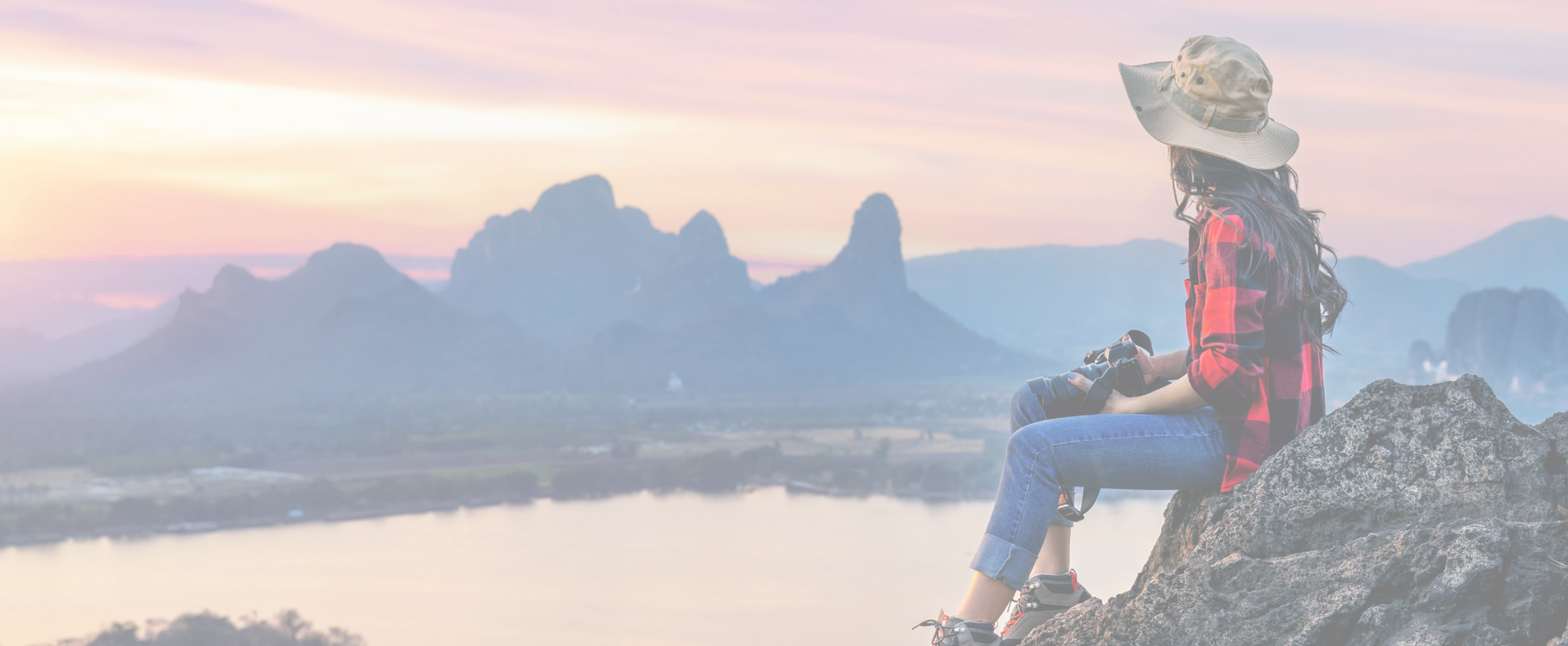
Newsletter
Sign up now!
Be the first one to know all about the Exciting Offers, Travel Updates and more.
Contact Us
B-42, 2nd Floor, Tower- B,
The Corenthum, Block A, Sector 62, Noida, Uttar Pradesh 201301
© 2015-2024 JustWravel Pvt. Ltd.
Starts From
₹ 8,000

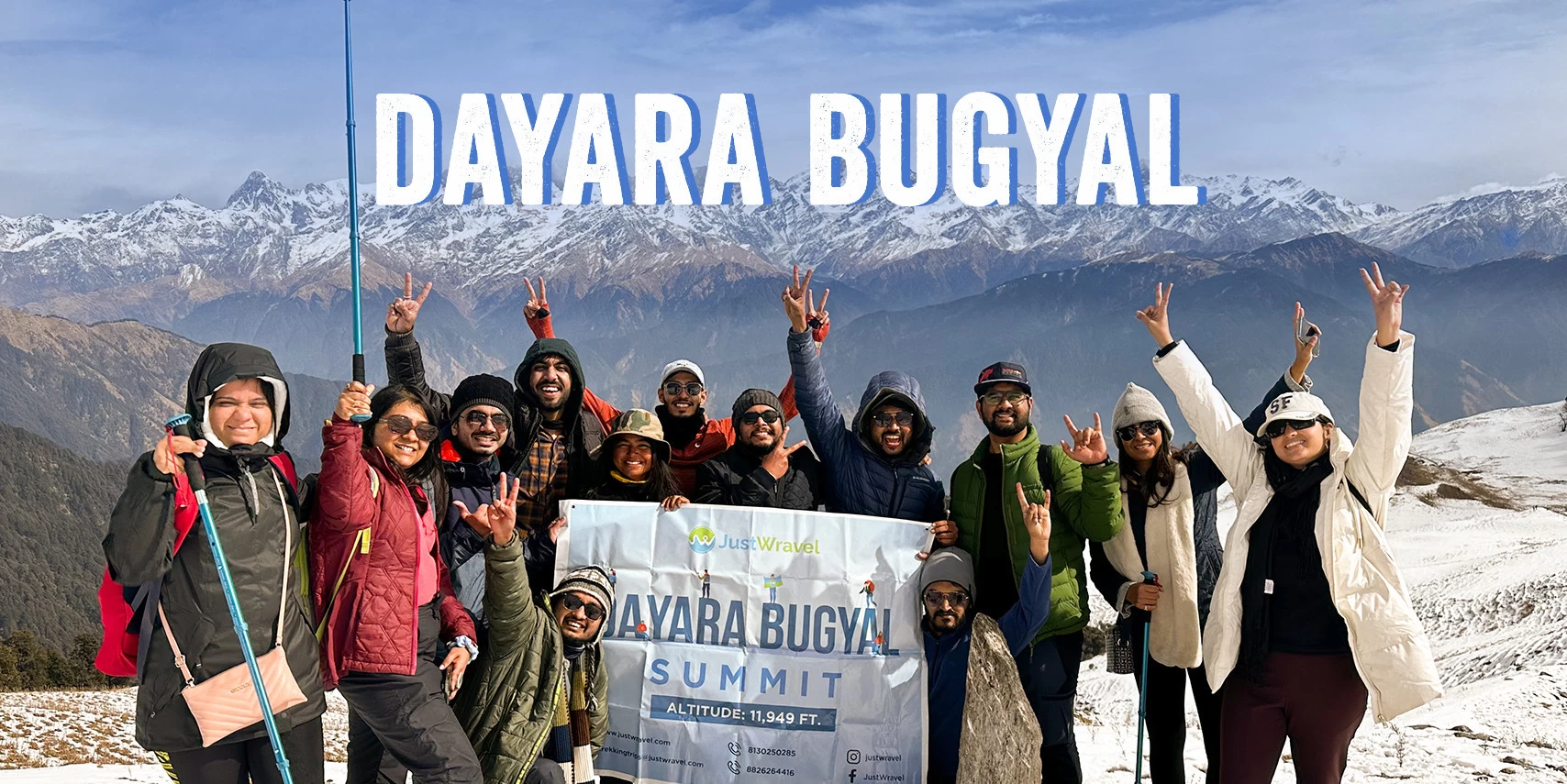
.webp)



